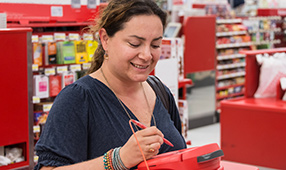If you don’t use your rewards, they’re difficult to obtain, or they aren’t as useful as you thought they would be, then you may want to consider applying for a new or additional rewards card.
There is no one-size-fits-all best credit card for everyone. The best card for your neighbor may not be the best for you, says credit card expert Beverly Harzog, author of The Debt Escape Plan.
To figure out which rewards cards to keep, kick out or add to your wallet, start by taking a look at your lifestyle and spending patterns. That will show you where your money is going now, what kind of reward cards you need and whether you could actually benefit from two or more different kinds of reward cards, Harzog says.
The two basic types of rewards cards involve cash back and airline miles rewards. Individual card terms may vary, but in general they work this way:
- Cash back rewards. When you use the card to pay for food, prescriptions, clothes or other covered everyday purchases, you earn rewards on the amount charged, and you can cash in your rewards to get money back later. If you have a big family, spend a lot on groceries and drive a lot for carpools and work, you could probably benefit from a cash back card, Harzog says.
- Airline or frequent flyer miles. When you use the card to make purchases, you accumulate reward points or miles that you can spend later on air travel. If you use the card often, you “can get huge discounts and sometimes even travel for free,” Harzog says. “I do a lot of traveling for business, so I have an airline miles card that I use for all of my business expenses.”
Should you have one, two or more?
“I know people who have five or six different rewards cards,” Harzog says. “That’s OK if you’re organized enough to keep track” and make sure you spend enough with each card to earn the rewards you want. “Believe it or not, a lot of people forget to use their rewards,” she says.
Many rewards don’t expire, but it makes more sense to use a card with rewards you won’t forget about. Use a spreadsheet or one of the many software management programs or apps such as Award Wallet, or create your own way of keeping track.
No matter how many rewards cards you carry, here are five tips to get the most from your multiple accounts.
1. Don’t carry a balance. Before you get any new rewards cards, make sure you can pay the full amount of the bill each month. “If you carry a balance on rewards cards, you can pay a lot of interest” because rewards cards can have a higher APR (annualized percentage rate of interest), Harzog explains. “That can negate the rewards you’ve accumulated.”
2. Check the card’s terms. “They’re all going to be a little different,” Harzog says. Read the whole rewards program documentation to make sure you understand what you’re getting. Even though the disclosures are complicated, you really need to just sit down and slog through them, she says.
3. Look for annual fees. Lots of cash back cards don’t charge annual fees, but some do. They can still be good deals, Harzog says. (She has one herself.) She recommends doing a “cost-benefit analysis” to make sure the amount the card saves you is “a lot more than that annual fee. Then it’s worth it.” It’s comparable to weighing the membership fee required to shop at certain stores versus the money you’d save by shopping there.
4. Weigh sign-up bonuses. Some bonuses are great, like air miles sign-up bonuses that are big enough to give you a free domestic flight ticket, but make sure you’ll actually use the card after that. Harzog cautions that some companies might close your account if you haven’t used it in six months or more. To keep the card active and protect your rewards, maybe use it for automatic payments on an existing bill, such as a monthly gym membership fee.
5. Check overseas transaction fees. There are lots of cards that still charge foreign transaction fees, usually at about 3% of each purchase you make, Harzog says. Look for cards that don’t add foreign transaction fees if you’re planning to use the card for international travel. You also may incur foreign transaction fees if you buy online. Harzog says that happened to her when she bought a college textbook for her daughter from an online Canadian bookstore.












